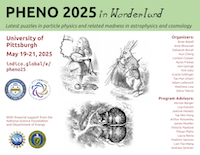Speaker
Description
The Project 8 experiment seeks to determine the electron-weighted neutrino mass via the precise measurement of the electron energy in beta decays, with a sensitivity goal of $40\,\mathrm{meV/c}^2$. We have developed a technique called Cyclotron Radiation Emission Spectroscopy (CRES), which allows single electron detection and characterization through the measurement of cyclotron radiation emitted by magnetically-trapped electrons produced by a gaseous radioactive source. We have successfully demonstrated the use of the technique to measure the tritium spectrum on a small scale. I will present a brief overview of the Project 8 experimental program, and the development of novel technologies for performing CRES using tritium atoms in a multi-cubic-meter volume. I will focus on the design of a Low-Frequency Apparatus (LFA) that deploys a cylindrical resonant cavity to capture the electron’s cyclotron radiation, increasing the signal-to-noise ratio and sensitive volume. The LFA will demonstrate the scalability of the CRES technique to the cubic-meter scale and reach sub-eV sensitivity to the neutrino mass.
This work is supported by the US DOE Office of Nuclear Physics, the US NSF, the PRISMA+ Cluster of Excellence at the University of Mainz, and internal investments at all collaborating institutions.

